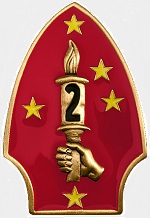Hobby Master HG4408 USMC LVT(A)-4 Amtank Amphibious Vehicle - 2nd Armored Amphibian Battalion, 2nd Marine Division, Tinian Island, August 1944 (1:72 Scale)
"Last week some 2,000 or 3,000 United States Marines, most of them now dead or wounded, gave the nation a name to stand beside those of Concord Bridge, the Bon Homme Richard, the Alamo, Little Big Horn, and Belleau Wood. The name was Tarawa."
- Robert Sherrod, Time Magazine War Correspondent embedded with the US Marines, December 6th, 1943
 The Landing Vehicle Tracked (LVT) was a class of amphibious vehicles introduced by the United States Navy, Marine Corps and Army during World War II. Originally intended solely as cargo carriers for ship to shore operations, they rapidly evolved into assault troop and fire support vehicles as well. The types were all widely known as amphtrack, amtrak, amtrac etc., a portmanteau of amphibious tractor.
The Landing Vehicle Tracked (LVT) was a class of amphibious vehicles introduced by the United States Navy, Marine Corps and Army during World War II. Originally intended solely as cargo carriers for ship to shore operations, they rapidly evolved into assault troop and fire support vehicles as well. The types were all widely known as amphtrack, amtrak, amtrac etc., a portmanteau of amphibious tractor.
After much deliberation, it was determined that amphibious tracked vehicles were the only solution to this problem. Both the amtrac and the amtank were developed, designed to be able to climb onto a reef from the sea then advance across the rough coral to the beach without exposing the troops inside to small arms fire. The amtracs were responsible for transporting troops ashore where they could continue the assault. The amtanks, on the hand, led the way, firing at the enemy positions the moment naval gunfire and air strikes lifted.
Based on the LVT-2, the LVT(A)-1 fire support version had an armored (6 to 12 mm) hull. It was fitted with a turret nearly identical to that of the Light Tank M3, with a 37 mm Gun M6 in an M44 mount, and also carried two rear-mounted machine guns. 510 units produced.
Pictured here is a 1:72 scale replica of a USMC LVT(A)-4 'Water Buffalo' Amtank Amphibious Vehicle that was attached to the 2nd Armored Amphibian Battalion, 4th Marine Division, then deployed to Tinian Island during August 1944.
Sold Out!
Dimensions:
Length: 4-1/4-inches
Width: 1-3/4-inches
Release Date: May 2015
 Historical Account "Tinian" - The 4th Marine Division landed on July 24th, 1944, supported by naval bombardment and marine artillery firing across the strait from Saipan. A successful feint for the major settlement of Tinian Town diverted defenders from the actual landing site on the north of the island. They withstood a series of night counterattacks supported by tanks, and the 2nd Marine Division landed the next day.
Historical Account "Tinian" - The 4th Marine Division landed on July 24th, 1944, supported by naval bombardment and marine artillery firing across the strait from Saipan. A successful feint for the major settlement of Tinian Town diverted defenders from the actual landing site on the north of the island. They withstood a series of night counterattacks supported by tanks, and the 2nd Marine Division landed the next day.
The weather worsened on July 28th, damaging the pontoon causeways, and interrupting the unloading of supplies. By July 29th, half the island was secure, and on July 30th the 4th Marine Division occupied Tinian Town and Airfield No. 4.
Japanese remnants made a final stand in the caves and ravines of a limestone ridge on the south portion of the island, making probes and counterattacks into the marine line. Resistance continued through August 3rd, with some civilians murdered by the Japanese.





![US Navy Northrop F-5E Tiger II Fighter - "Red 10," 1970 [Aggressor Scheme] (1:72 Scale)](http://cdn4.volusion.store/qh9e9-jdqv9/v/vspfiles/photos/HA3328-1.jpg?v-cache=1740197136)
